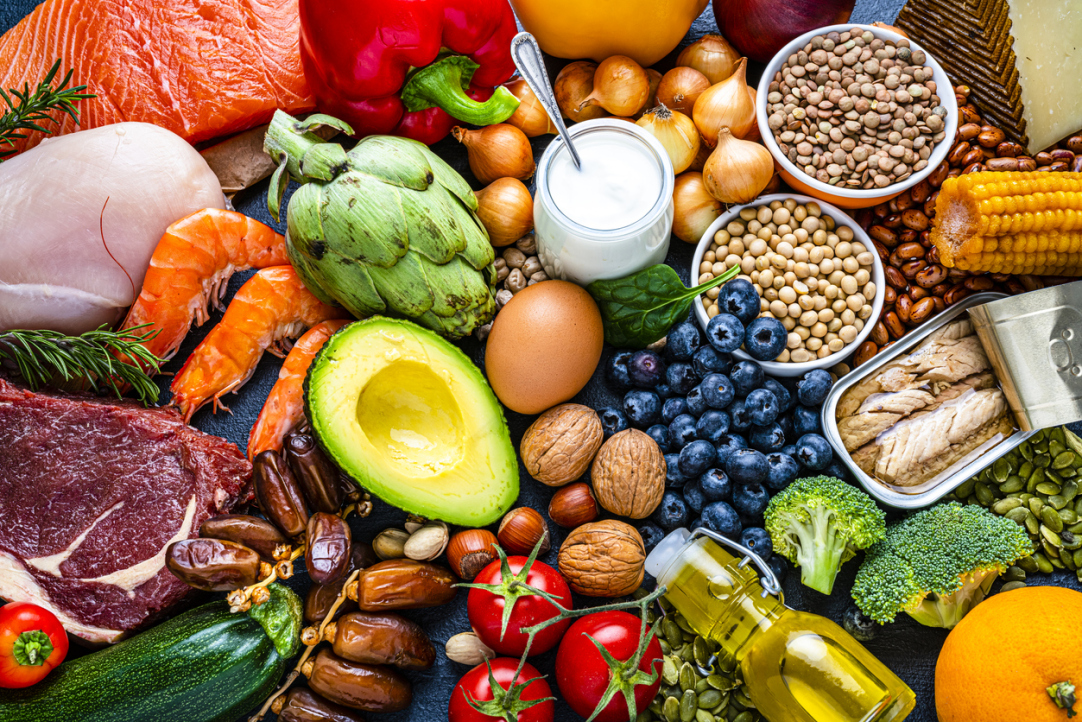Healthy Nutrition Saves Public Funds: Strategies to Reduce Healthcare Costs in Russia

In Russia, the annual cost of treating type 2 diabetes alone exceeds 500 billion roubles. Promoting healthy nutrition programmes can ease the burden on the healthcare system and increase life expectancy. This was the conclusion reached by economists at HSE University after analysing global experiences with government involvement in promoting a healthy lifestyle.
An unbalanced diet and nutritional disorders, whether due to malnutrition or overeating, cause harm to health and increase the burden on the healthcare system and social costs. According to the World Bank, low- and middle-income countries collectively lose up to $100 billion annually in medical costs and reduced productivity due to diseases linked to the consumption of substandard and unhealthy food. Similar issues are observed in Russia: a 2016 study found that the cost of treating type 2 diabetes alone, which develops in 70% of cases due to overeating and an imbalanced diet, amounts to nearly 1% of the annual GDP.
Assistant Professor at the HSE Faculty of Economic Sciences Natalia Khorkina, in collaboration with Research Fellow at the Laboratory of Public Sector Economic Research, HSE Centre for Basic Research, Kristina Chetaeva and bachelor's student at the HSE Faculty of Economic Sciences Alexandra Shpeko, analysed best practices of other countries in promoting healthy nutrition programmes and used the findings to develop recommendations for Russia.
There are three primary methods for increasing the popularity of healthy food consumption: educational initiatives, economic measures, and administrative regulation. Each of the methods can be applied both at the central and regional levels. According to the authors, the most effective approach is a combination of higher taxes on harmful products along with subsidies for both producers and consumers of healthy food. In Western European countries, the introduction of an excise tax of 10% to 20% on sugary carbonated drinks has led to a 12% to 15% reduction in their consumption, resulting in a $17 billion decrease in healthcare costs. In Mexico, implementing such a tax has resulted in savings of $4 for every dollar spent on administering the programme. In 2023, Russia introduced an excise tax on sugary drinks, leading to a twofold reduction in sugar content in many of these beverages.
Subsidising producers of healthy foods and encouraging the availability of nutritious options in the market can also be effective strategies. For example, Singapore has implemented a competitive support system for manufacturers. The country invested $35 million in the programme, distributing this amount among 100 companies. Subsequently, their products were featured in over 10,000 food and retail establishments. In 2022 alone, this initiative led to the preparation of over 200 million servings of food containing healthy ingredients. Additionally, providing support to specific population groups can be beneficial, such as subsidising hot lunches in schools and offering free meals to students from large families, orphans, and other vulnerable groups. Administrative measures can also produce positive outcomes. For example, in Gateshead, England, local authorities have prohibited the establishment of fast-food outlets near schools and in areas with high rates of childhood obesity. As a result, the proportion of public catering establishments offering junk food in the town decreased by 14% over four years. In Los Angeles, measures to ban new fast-food outlets resulted in a 3% reduction in obesity rates and a 2% decrease in diabetes rates within seven years of the ban. Many Latin American countries have implemented food labelling that highlights high calorie content and the associated health risks of consuming these products. In Chile, up to 50% of the population altered their eating habits following the introduction of such labelling, while in Uruguay, the consumption of sugary carbonated drinks dropped by 24%.

Kristina Chetaeva
Such nudging measures have proven highly effective and could be implemented in Russia as well. According to the authors, one effective method could be the ‘traffic light’ labelling system. It uses color-coded labels to inform customers about the nutritional content and health impact of products: red for harmful, green for beneficial, and yellow for products with mixed properties. 'This is an effective and intuitive method for helping people make informed decisions about the food they buy, which is especially crucial for young people whose eating habits are still developing. For example, studies conducted in Ecuador have shown that this labelling system can encourage children and adolescents to choose healthier foods. Scientists in Japan observed a significantly healthier selection of dishes by students after implementing traffic light-style labels on the dinner menu. In Russia, the traffic light labelling is still optional and not very common,' comments Kristina Chetaeva, Research Fellow at the Laboratory of Public Sector Economic Research, HSE Centre for Basic Research.

Natalia Khorkina
Many of these measures are already in place in Russia. For example, a reduced VAT rate of 10% is applied to healthy foods such as meat, dairy products, vegetables, and berries, while the VAT rate for fast food has been increased to 20%. In 2024, up to 8 billion roubles will be allocated for subsidies to farms. Nevertheless, the researchers recommend maintaining and expanding policies that promote healthy eating. 'Subsidies for sellers of healthy foods, additional funding for school hot lunches, and benefits for employers who offer balanced diets to their employees could serve as key tools for promoting healthy eating in Russia. Additionally, it is important to continue differentiating indirect taxes on specific food groups, following the model of the excise tax on sugary carbonated drinks introduced in 2023, and to make the product labelling system more accessible and understandable. Such a policy could lead to a significant reduction in the burden on the healthcare system,' according to Natalia Khorkina, Assistant Professor at the HSE Faculty of Economic Sciences.
See also:
Designing an Accurate Reading Skills Test: Why Parallel Texts are Important in Dyslexia Diagnosis
Researchers from the HSE Centre for Language and Brain have developed a tool for accurately assessing reading skills in adults with reading impairments. It can be used, for instance, before and after sessions with a language therapist. The tool includes two texts that differ in content but are equal in complexity: participants were observed to read them at the same speed, make a similar number of errors, and understand the content to the same degree. Such parallel texts will enable more accurate diagnosis of dyslexia and better monitoring of the effectiveness of interventions aimed at addressing it. The paper has been published in Educational Studies.
Internal Clock: How Heart Rate and Emotions Shape Our Perception of Time
Our perception of time depends on heart rate—this is the conclusion reached by neuroscientists at HSE University. In their experiment, volunteers watched short videos designed to evoke specific emotions and estimated each video's duration, while researchers recorded their heart activity using ECG. The study found that the slower a participant's heart rate, the shorter they perceived the video to be—especially when watching unpleasant content. The study has been published in Frontiers in Psychology.
Scientists Identify Personality Traits That Help Schoolchildren Succeed Academically
Economists from HSE University and the Southern Federal University have found that personality traits such as conscientiousness and open-mindedness help schoolchildren improve their academic performance. The study, conducted across seven countries, was the first large-scale international analysis of the impact of character traits on the academic achievement of 10 and 15-year-olds. The findings have been published in the International Journal of Educational Research.
HSE Scientists Reveal How Disrupted Brain Connectivity Affects Cognitive and Social Behaviour in Children with Autism
An international team of scientists, including researchers from the HSE Centre for Language and Brain, has for the first time studied the connectivity between the brain's sensorimotor and cognitive control networks in children with autism. Using fMRI data, the researchers found that connections within the cognitive control network (responsible for attention and inhibitory control) are weakened, while connections between this network and the sensorimotor network (responsible for movement and sensory processing) are, by contrast, excessively strong. These features manifest as difficulties in social interaction and behavioural regulation in children. The study has been published in Brain Imaging and Behavior.
Similar Comprehension, Different Reading: How Native Language Affects Reading in English as a Second Language
Researchers from the MECO international project, including experts from the HSE Centre for Language and Brain, have developed a tool for analysing data on English text reading by native speakers of more than 19 languages. In a large-scale experiment involving over 1,200 people, researchers recorded participants’ eye movements as they silently read the same English texts and then assessed their level of comprehension. The results showed that even when comprehension levels were the same, the reading process—such as gaze fixations, rereading, and word skipping—varied depending on the reader's native language and their English proficiency. The study has been published in Studies in Second Language Acquisition.
Mortgage and Demography: HSE Scientists Reveal How Mortgage Debt Shapes Family Priorities
Having a mortgage increases the likelihood that a Russian family will plan to have a child within the next three years by 39 percentage points. This is the conclusion of a study by Prof. Elena Vakulenko and doctoral student Rufina Evgrafova from the HSE Faculty of Economic Sciences. The authors emphasise that this effect is most pronounced among women, people under 36, and those without children. The study findings have been published in Voprosy Ekonomiki.
Scientists Discover How Correlated Disorder Boosts Superconductivity
Superconductivity is a unique state of matter in which electric current flows without any energy loss. In materials with defects, it typically emerges at very low temperatures and develops in several stages. An international team of scientists, including physicists from HSE MIEM, has demonstrated that when defects within a material are arranged in a specific pattern rather than randomly, superconductivity can occur at a higher temperature and extend throughout the entire material. This discovery could help develop superconductors that operate without the need for extreme cooling. The study has been published in Physical Review B.
Scientists Develop New Method to Detect Motor Disorders Using 3D Objects
Researchers at HSE University have developed a new methodological approach to studying motor planning and execution. By using 3D-printed objects and an infrared tracking system, they demonstrated that the brain initiates the planning process even before movement begins. This approach may eventually aid in the assessment and treatment of patients with neurodegenerative diseases such as Parkinson’s. The paper has been published in Frontiers in Human Neuroscience.
Civic Identity Helps Russians Maintain Mental Health During Sanctions
Researchers at HSE University have found that identifying with one’s country can support psychological coping during difficult times, particularly when individuals reframe the situation or draw on spiritual and cultural values. Reframing in particular can help alleviate symptoms of depression. The study has been published in Journal of Community Psychology.
Scientists Clarify How the Brain Memorises and Recalls Information
An international team, including scientists from HSE University, has demonstrated for the first time that the anterior and posterior portions of the human hippocampus have distinct roles in associative memory. Using stereo-EEG recordings, the researchers found that the rostral (anterior) portion of the human hippocampus is activated during encoding and object recognition, while the caudal (posterior) portion is involved in associative recall, restoring connections between the object and its context. These findings contribute to our understanding of the structure of human memory and may inform clinical practice. A paper with the study findings has been published in Frontiers in Human Neuroscience.


